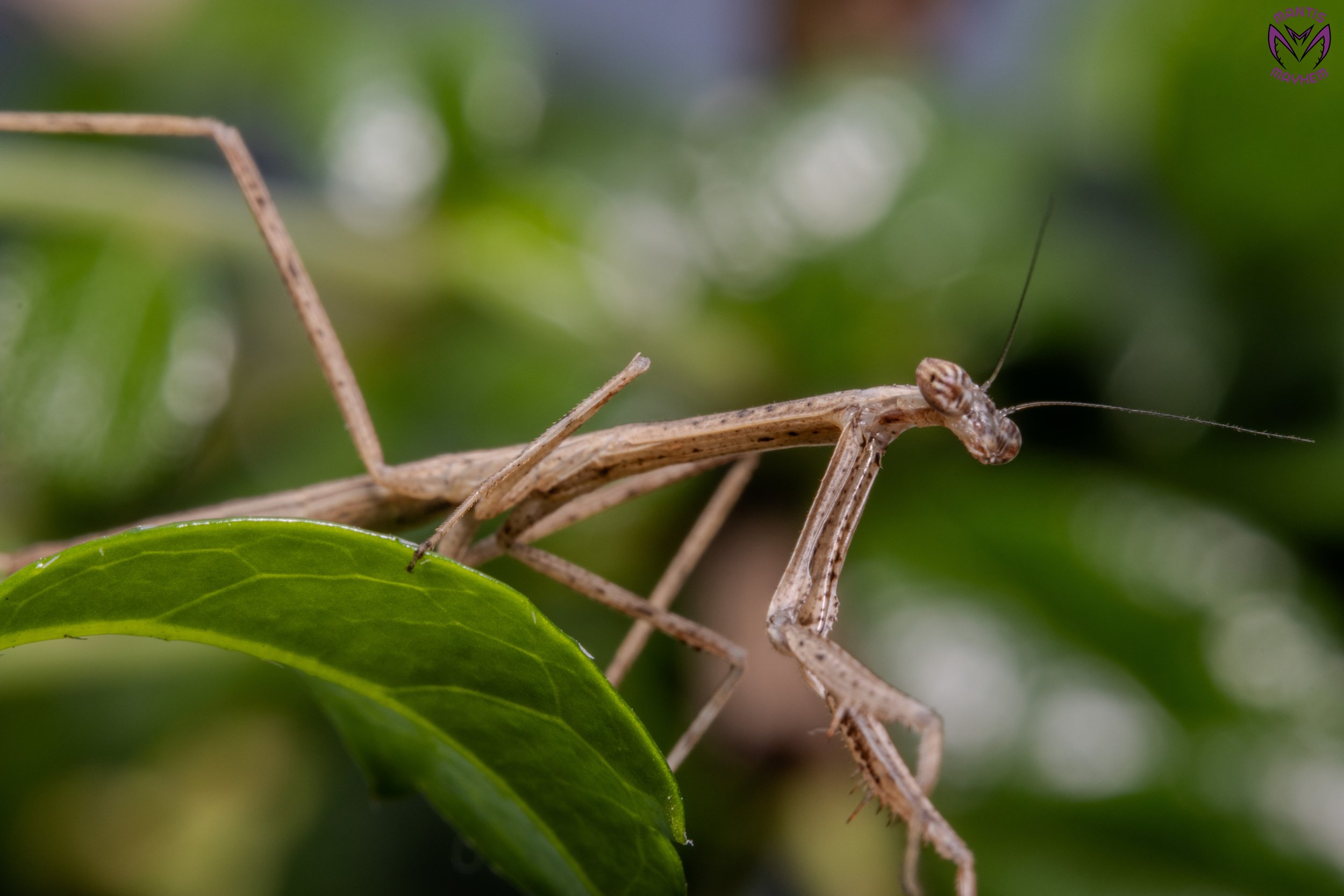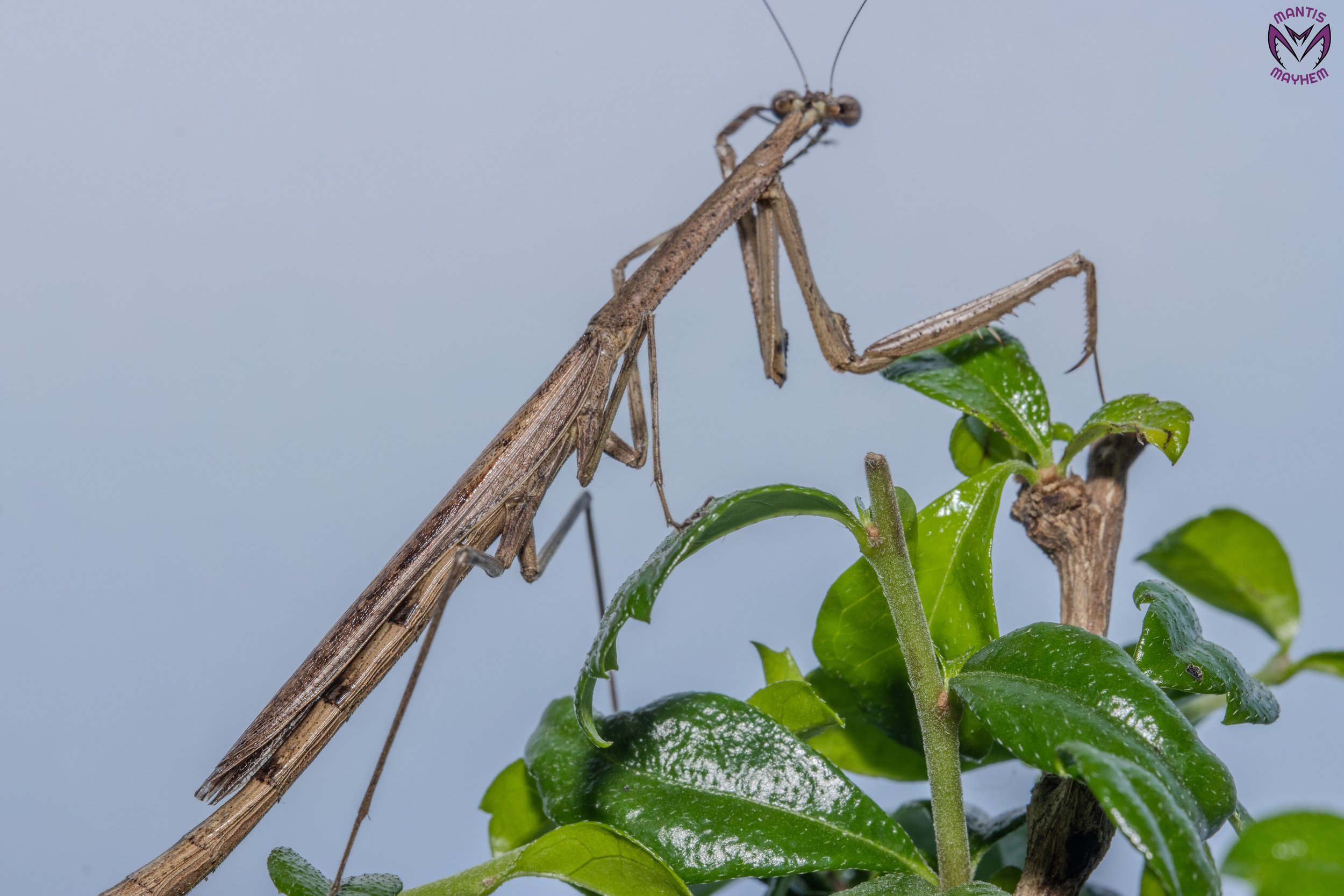Danuria contorta Care Guide: Giant Grass Mantis
Welcome to Praying Mantis World! Here’s your ultimate care guide for the intriguing Giant Grass Mantis (Danuria contorta).
General Information
Scientific Name: Danuria contorta
Common Name: Giant Grass Mantis
Origin: Native to the grasslands and forests of Southeast Asia.
Lifespan: Typically 6 to 12 months.
Size: Females can grow up to 9 cm (3.5 inches), while males are usually smaller, around 7 cm (2.8 inches).
Enclosure Requirements
Enclosure Size: Choose a well-ventilated terrarium that is at least three times the mantis's body length in height and twice its body length in width and depth.
Substrate: Use substrates that retain moisture, such as coconut fiber, peat moss, or a mix of soil and sand.
Decor: Mimic their natural habitat with grass-like plants, twigs, and branches. Provide plenty of vertical and horizontal climbing spaces.
Humidity: Maintain humidity levels between 60-80%. Lightly mist the enclosure 2-3 times a week.
Temperature: Ideal temperatures range between 24-28°C (75-82°F) during the day, with slightly cooler temperatures at night.
Feeding
Diet: Feed your mantis a variety of live insects. Recommended options include:
Fruit flies (Drosophila species) for nymphs.
Blue bottle flies (Calliphora vomitoria).
Waxworms (Achroia grisella) - offer sparingly due to high-fat content.
Moths.
Roaches (such as Dubia roaches).
Feeding Frequency: Young nymphs should be fed daily, while adults can be fed every 2-3 days. Always remove uneaten prey to avoid stress and potential harm to your mantis.
Hydration: Mantises typically get moisture from their prey and the enclosure’s humidity. Occasionally mist the enclosure lightly.
Molting
Signs of Molting: Before molting, mantids will stop eating and become less active, often hanging upside down.
Molting Conditions: Ensure adequate vertical space and maintain high humidity to facilitate a successful molt.
Post-Molt Care: Avoid handling or feeding your mantis for at least 24 hours post-molt to allow the exoskeleton to harden.
Handling
Handling Tips: Limit handling to minimize stress. Mantises are delicate and should be handled with care.
Handling Method: Gently coax the mantis onto your hand using a soft brush or your fingers. Avoid sudden movements.
Breeding
Sexing: Females are larger with wider abdomens, while males are slimmer with longer antennae.
Breeding Setup: Introduce the male into the female’s enclosure with caution, ensuring plenty of space and hiding spots to reduce cannibalism risk.
Post-Mating Care: Remove the male after mating to prevent him from being eaten. Females will lay oothecae (egg cases), which should be kept at 24-26°C (75-79°F) with 60-80% humidity for successful hatching.
Health and Maintenance
Cleaning: Spot clean the enclosure regularly and conduct a thorough cleaning every few weeks to prevent mold and bacteria buildup.
Health Monitoring: Watch for signs of dehydration (shriveled appearance) or molting issues (incomplete molts). Adjust humidity and temperature as needed.
Pests and Diseases: Ensure feeder insects are healthy and free from parasites. Avoid using wild-caught insects to reduce the risk of introducing pests or diseases.
Observing Behavior
Camouflage: Giant Grass Mantises are well-camouflaged among grasses and plants, making them efficient ambush predators. Their slender bodies and green coloration help them blend seamlessly with their environment.
By following this care guide, you can create a thriving environment for your Danuria contorta. Enjoy the fascinating world of the Giant Grass Mantis!



















